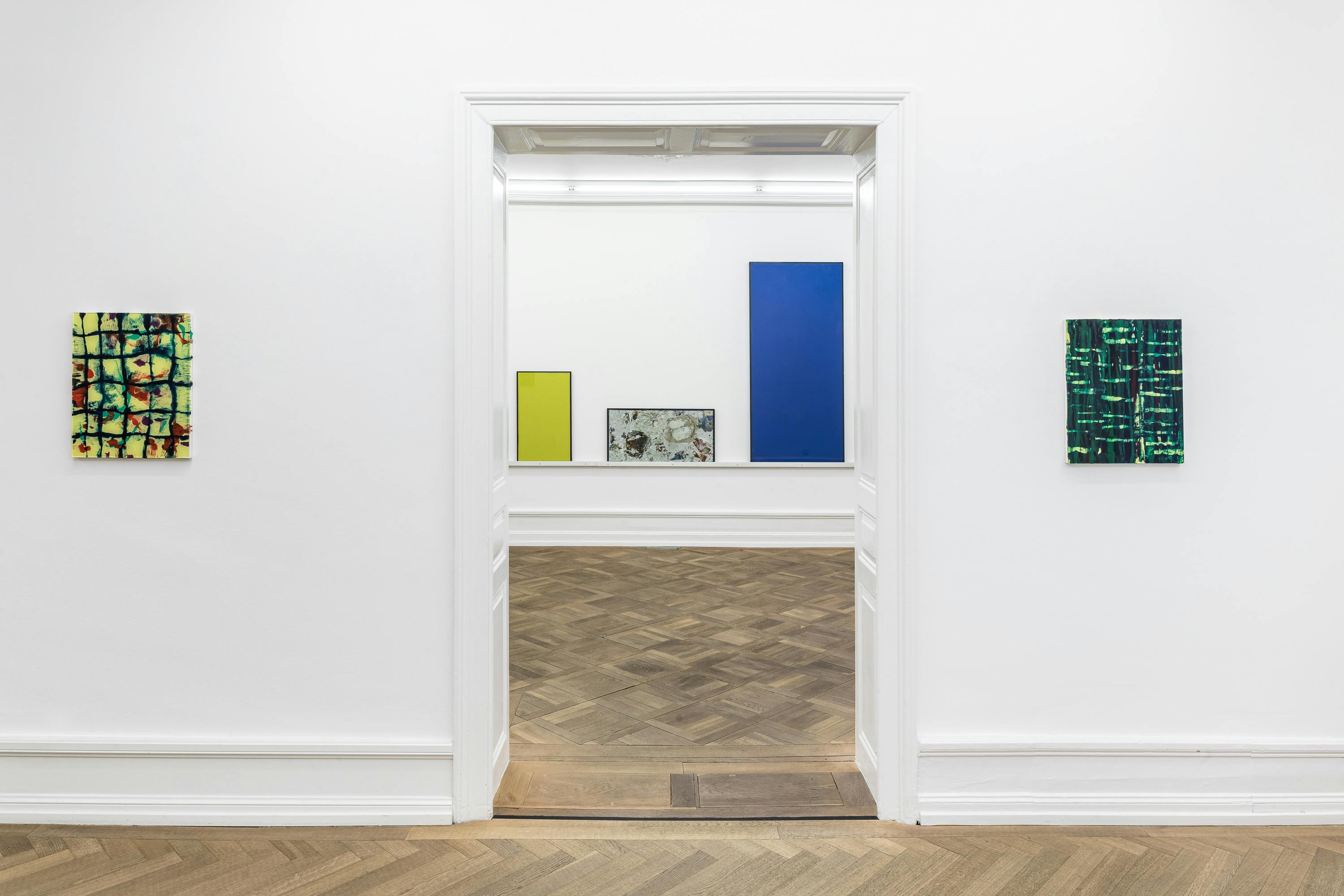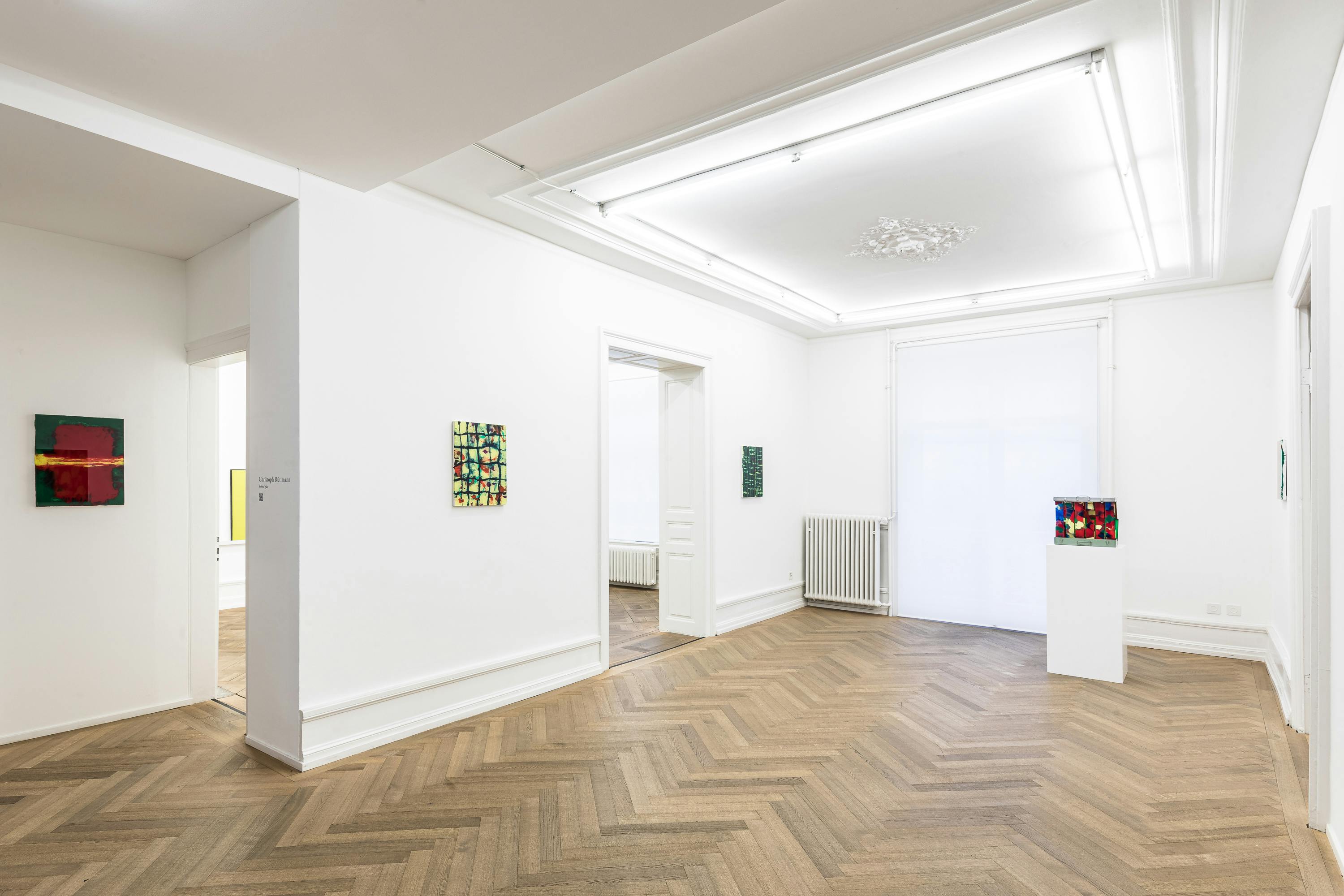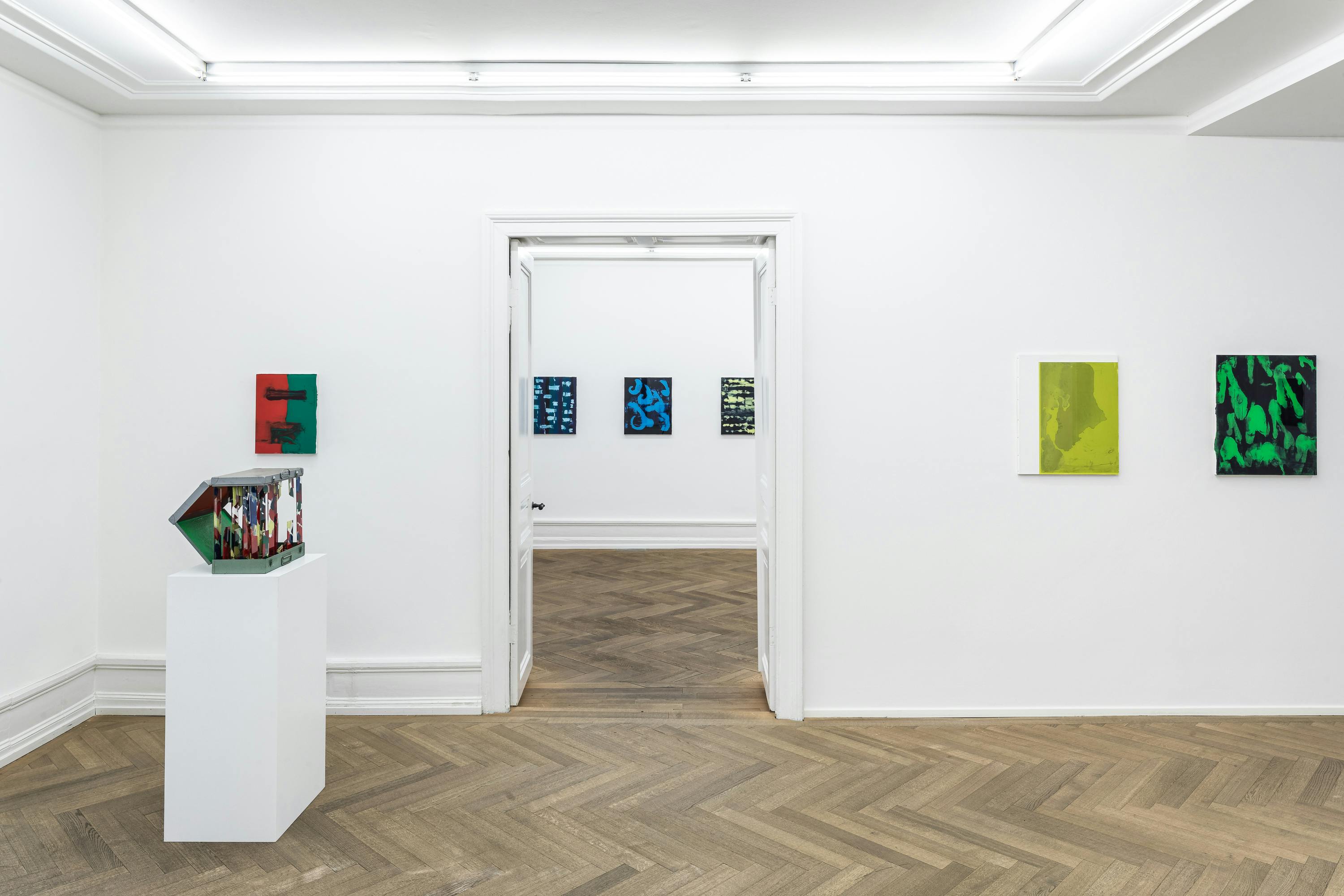Vernissage: Thursday, January 18, 2024, 6pm
Exhibition Duration: January 19 – March 09, 2024
Christoph Rütimann's work is characterised by a complex and dynamic spectrum of artistic strategies which range from performances to sound, text, video and photographic works to classical means of expression such as drawing, painting and sculpture. The exhibition behind glass focuses on Rütimann's reverse glass paintings, which have been part of his practice for more than 30 years.
Rütimann's relationship with painting in the 1980s was ambivalent. His enthusiasm for colour was great, but he hesitated to pick up a brush for a long time. In the artist’s view, art history was at a turning point – the visual abundance and revival of styles within painting were not of interest to him. Fascinated by the potential of colour and its self-sufficiency, he wanted to immerse himself anew in the world of painting. With the burning desire to keep moving forward, he held on to the ambition of finding his own approach. But how was this possible?
The work in Rütimann's own history, in which the handling of colour, which would ultimately lead him to painting, played an essential role, is the photographic work Chi ha detto che il giallo non è bello (Who said that yellow is not beautiful).
It was created in 1983 alongside a blooming field of rapeseed. Rütimann engaged in throwing his camera up in the air, capturing snapshots by controlled chance using a self-timer. The bright yellow of the rapeseed field, the dark green of the forest, and the blue of the sky are recognisable within these distorted images. Dynamic blurring and an abstractly composed haziness give the work a painterly appearance. For Rütimann, this was a first 'painting'. He compares the landscape to a palette that provides him with the colours, and the camera to a brush that mixes them. 'I let the camera paint pictures.’ At the time the artist carried out the action in the rapeseed field, he had not yet picked up a paintbrush himself. Yet the photographic work anticipates some elements of his reverse glass painting: the colour and the material, as the photographs were exhibited behind glass at Mai 36 Galerie in 1989. The initially disturbing reflection of the photographs framed behind glass ultimately led Rütimann to take the reflection seriously - it was the beginning of his behind glass painting.
The subject of Chi ha detto che il giallo non è bello is colour. In particular the colour yellow, which from then on became the starting colour for Rütimann's painting. (A fine example of this is his work Malerei hinter Glas, which was exhibited in the Chiesa San Staë at the Venice Biennale in 1993). For Rütimann, however, the decisive step into painting meant not only finding the right colour, but also the right medium (in terms of carrier). By painting on/behind glass, Rütimann arrived at what he perceived as a liberating solution to the problem of painting, a new individual point zero, from which he explored the fundamental conditions and possibilities of the medium. In doing so, he reverses the temporal process of image creation and perception. Glass as the medium of painting allows him to paint 'backwards', it enables him to create a 'negative' colour architecture. Instead of painting towards the viewer, he paints away from him. When he applies layer after layer of acrylic paint to the glass and ultimately turns the glass plate against the wall, the viewer does not see the last layer, but rather the first layer of paint applied through the glass, which covers the glass as a surface without any visible gesture. The viewer's visual experience of colour does not extend beyond this first layer, yet Rütimann continues to paint or build the picture. Perhaps this pictorial structure also reflects the history of painting in its own way.
For his latest works, Rütimann modified his process by applying paint to a glass plate in several stages and pressing its wet side onto a canvas-covered frame. Infinite possibilities allow for a wide variety of colours and reflections in this new pictorial space. Christoph Rütimann commented on reverse glass painting in an interview: 'I leave almost all the tasks that the artist once had to perform to the colour – the absorption and transformed reproduction of light and even the depiction of reality.
A similar arbitrariness can be found in the laundry salon that Rütimann set up in the Apropos gallery in Lucerne in 1996. Instead of washing clothes, he washed various art books on painting and thus their history. The washing machine transformed the colourful books into a grey pulp consisting of fragments of art history, which Rütimann went on to capture between double panes of glass (see Blau Wasch Gelb, 1996/2002). Here, too, the artist actively engages with art history by transforming it through the washing process and thereby giving it a new materiality.





